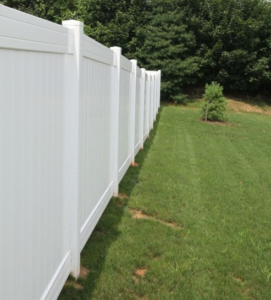Plantation-Shutters Louisville KY are a popular window treatment choice that can add value to your home. Their clean lines and elegant simplicity complement many different architectural styles. They also provide more light control and privacy than blinds.

In the summer, they can block out the sun’s scorching rays and reduce cooling costs. In the winter, they can help to keep your home warm.
If you’re looking to add value to your home, you can’t go wrong with plantation shutters. These window dressings are not only beautiful, they also offer numerous benefits like privacy, insulation and light control. In addition, they are easy to clean and provide superior energy efficiency.
Unlike other window fashions, plantation shutters are long-lasting and will continue to enhance the aesthetics of your home for years to come. They are also made from high-quality materials that will not fade or deteriorate over time, making them a great investment for homeowners. Whether you’re looking for a traditional wood look or a more modern faux finish, there is a plantation shutter to suit your taste and budget.
Another advantage of plantation shutters is that they are often a more cost-effective choice than other window treatments, such as blinds and curtains. They can be customized to fit a specific window and come in a variety of shapes, sizes, and colors. In addition, they’re a perfect fit for any room in your home and can be used as a focal point to draw attention from visitors.
Shutters are also a more eco-friendly option than other window coverings, as they help to insulate your home against harsh hot and cold temperatures. This can save you money on your energy bills in the summer and reduce your reliance on air conditioning units, which helps to cut down on greenhouse gas emissions.
Furthermore, shutters can be designed with adjustable slats to let in natural sunlight or block out the sun’s rays. This can help to preserve furniture and flooring, as well as reduce fading caused by UV rays. They are also easier to clean than other window dressings, which can make them a safer choice for homes with children or pets.
As a final benefit, plantation shutters are easy to maintain and will remain in good condition for a long time, which can increase your property’s overall value. This is because they can be easily replaced or repaired, unlike other window coverings that need to be completely redone when they start showing signs of wear and tear.
They are a great way to add privacy to your home
Having plantation shutters in your home is a great way to add privacy and security. They block out the view of people outside your windows and keep prying eyes from seeing in. This can be especially important for homes that back onto streets or neighbours. They are also easy to clean, and they require less maintenance than curtains or blinds. They do not collect dust the same way that other window coverings do, so they are a good choice for those who suffer from allergies or asthma.
In addition to privacy, plantation shutters can help reduce glare and heat in the home. This can lower air conditioning bills and prevent damage to furnishings from excessive exposure to sunlight. In addition, they can also help reduce the amount of harmful UV rays that enter the home, which can cause furniture to fade over time.
The slats of plantation shutters can be tilted to open and close the windows, giving you control over light and privacy in your home. They can be opened fully to let in natural light, closed completely to block out views from the outside, or partially opened to allow air to circulate. In the summer, you can use them to keep the hot sun out and in the winter they can be used to trap warm air inside.
Custom-fitted shutters are an excellent insulator, which can save you money on energy costs. They provide a thermal barrier that keeps the hot or cold air out, and they help to keep your home at a comfortable temperature all year round. This can lead to savings on your electricity and gas bills, making them a great investment.
Although they are more expensive than other types of window treatments, plantation shutters can increase the value of your home. They are a permanent fixture in the home, and they can add curb appeal to your property. They also improve the overall appearance of the home, and they can help to make the house look more inviting. Moreover, they are a good option for people who want to sell their home in the future.
They are a great way to add light to your home
Adding plantation shutters to your home is an excellent way to add light and create a warm and inviting ambiance. They can be positioned to let in just the right amount of light, and can also be closed when you need privacy or darkness.
These window treatments can be a good investment for your home, and will increase its value when you decide to sell it. They are available in a variety of styles and materials, so you can find the perfect option to suit your style. Wood shutters are a great choice for traditional homes, while vinyl and composite are ideal for modern styles.
They also provide great insulation, which can help to reduce your energy bills. They are easy to clean, and don’t trap dust or allergens like many other window dressings. This can be particularly beneficial for people with allergies or asthma.
The benefits of plantation shutters go far beyond their aesthetic appeal. They can also improve your home’s overall health and well-being. They can be used to reduce glare and help to keep your furniture from fading due to exposure to sunlight. They can also help to keep your home cool in the summer and warm in the winter.
You can find a wide range of plantation shutters to fit any size or shape of window or door opening. They can be custom made to fit your home, and are designed to complement any interior design scheme. They can also be made from a variety of materials, including solid wood, vinyl, and composite.
Another benefit of plantation shutters is that they are child-safe, which can be a great benefit if you have children or pets. Many other window coverings include cords, which can be a safety risk for children and pets who may get their hands or feet caught in them. Shutters, on the other hand, operate using levers, so there’s no need to worry about your little ones getting tangled up in them.
Homeowners are often drawn to the look and feel of plantation shutters, which can add an elegant touch to any room in the house. They can also enhance curb appeal and signal to potential homebuyers that your home is well-cared for, and is a premium upgrade. They can even be included in property listings, making your home stand out in the competitive real estate market.
They are a great way to add style to your home
Plantation shutters are a window treatment that adds both style and value to your home. They are custom-made to fit your window and can be crafted in a variety of styles. Many homeowners use them to create a more traditional, cottage, or modern look in their home. They can also be painted in unique shades to add a pop of color. They can also be used in place of curtains or paired with draperies for light control and privacy.
Plantations shutters are extremely durable and can withstand harsh weather conditions. Unlike some other window coverings, they don’t yellow in the sun or fade over time. They’re also easy to clean and require very little maintenance. You can wipe down the louvers with a damp cloth or duster. Plus, they don’t attract dust mites like other types of window treatments do.
Many people choose to pair plantation shutters with curtains for maximum versatility. Curtains can be hung high or close to the floor and provide additional privacy when needed. They also offer excellent light control and are available in a variety of widths. The most popular louver sizes are 2.5 inches, 3.5 inches, and 4.5 inches. Louver size is a personal choice and should be chosen according to the existing décor in your room.
Another way to add style to your home is to frame the windows with a decorative molding. This is an inexpensive and effective way to add a touch of elegance to your home. There are a number of options for window framing, including Z frames and deco frames. These are a great choice for rooms that get a lot of sunlight, such as kitchens and bathrooms.
If you’re planning on selling your home in the future, you should consider adding plantation shutters to increase the resale value. This simple upgrade will make your home more appealing to buyers and can be a huge money-maker.
Plantation shutters are also a great option for second homes, such as beach houses or vacation homes. They can help make your vacation home feel like a complete retreat while still maintaining the integrity of the property. Whether you choose a natural wood finish or a painted color, you’ll be sure to find the perfect match for your style.








